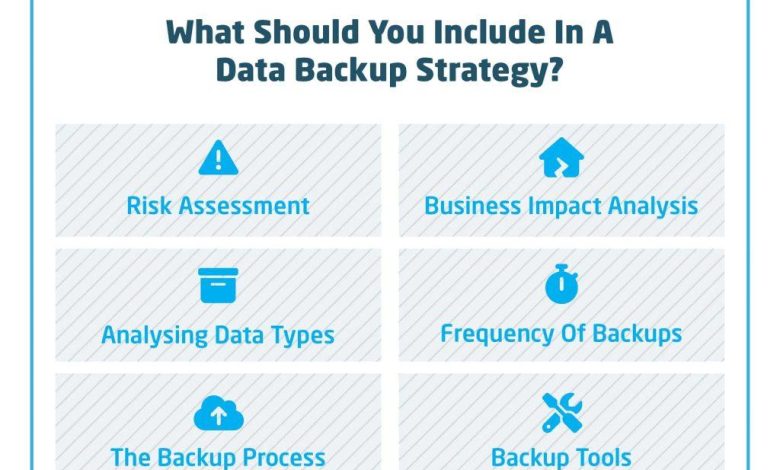Implementing a Backup Strategy in a Hybrid IT Environment

Implementing a Backup Strategy in a Hybrid IT Surroundings
In today’s rapidly evolving technological landscape, organizations are increasingly adopting hybrid IT environments. These setups blend on-premises infrastructure with cloud services to create a flexible and scalable IT ecosystem. however,as businesses transition to hybrid models,ensuring data protection thru a comprehensive backup strategy becomes paramount.In this article, we’ll explore the essentials of implementing an effective backup strategy in a hybrid IT environment, the associated benefits, practical tips, and real-world case studies.
Understanding Hybrid IT Environments
A hybrid IT environment integrates both private and public cloud solutions alongside traditional on-premises systems. This configuration allows organizations to leverage the advantages of different infrastructures, enhancing performance, scalability, and cost efficiency. However, this complexity poses significant challenges in data management and protection.
Key Characteristics of Hybrid IT
- Diverse infrastructure: combines local data centers with cloud services, offering versatility.
- Scalability: Easily adapts to changing workloads and requirements.
- Cost Efficiency: Optimize costs by utilizing the best resources available.
- Enhanced Performance: Local processing capabilities alongside cloud computing power.
Why a Backup Strategy is Crucial
Implementing a backup strategy in a hybrid IT environment is not just a best practice; it is a necessity. Here are several reasons why:
- Data loss Prevention: Prevents the adverse effects of hardware failures,human errors,and cyber threats.
- Regulatory Compliance: Helps organizations meet industry regulations regarding data security and retention.
- Business Continuity: Ensures rapid recovery from disasters, minimizing downtime and disruptions.
- Increased Data Mobility: Facilitates data movement between environments, ensuring consistent backup coverage.
Components of an Effective Backup Strategy
A robust backup strategy should encompass several critical components to ensure data integrity and availability across a hybrid IT environment.
1. Backup Policy Development
Establish a clear backup policy that outlines:
- What data needs to be backed up
- The frequency of backups
- Retention periods for backup data
- Roles and responsibilities within the backup process
2. Data Classification
Understanding the nature and importance of your data is crucial. Classify your data to prioritize which data should be backed up first. Key categories include:
- Critical Data: Essential for daily operations.
- Regulatory Data: Required for compliance with regulations.
- Past Data: Needed for audits and business intelligence.
3. Backup Methods
Select appropriate backup methods based on your data types and workload needs:
| Backup Method | Description | Best Use Case |
|---|---|---|
| Full Backup | Complete copy of all data. | small organizations with manageable data volumes. |
| Incremental Backup | Backs up only data changed since the last backup. | Larger organizations wanting to minimize backup resources. |
| Differential Backup | Backs up all changes since the last full backup. | Organizations with consistent data changes requiring faster recovery. |
4. Storage Solutions
Choose suitable storage solutions that align with your hybrid architecture:
- On-Premises Storage: Physical storage systems for data that requires speedy access.
- Cloud storage: Cost-effective and scalable solution for offsite backups.
- Hybrid Solutions: Combining both on-premises and cloud storage for optimal flexibility.
5. Automation and Scheduling
Automate your backup processes to minimize human error. Schedule regular backups during off-peak hours to optimize system performance.
Benefits of a Backup Strategy in Hybrid IT Environments
Implementing a solid backup strategy in a hybrid IT environment can lead to numerous advantages, including:
- Enhanced Security: Protects against data breaches and ransomware attacks.
- improved Recovery Time: Enables faster data recovery in the event of a loss.
- Cost Savings: Reduces potential costs related to data loss and downtime.
- Flexibility: Adaptable to various compliance requirements and business objectives.
Practical Tips for Implementation
Here are some practical tips to help you implement your backup strategy effectively:
- Regular Testing: Regularly test backup restores to ensure data integrity and recovery capability.
- Keep it Simple: Avoid overly complex backup systems that can lead to confusion and mistakes.
- Utilize Multi-Factor Authentication: Enhance security for backup access points.
- Stay Informed: Keep abreast of new backup technologies and techniques that can benefit your strategy.
Case Studies: Accomplished Backup Strategy Implementations
Let’s explore a few real-world examples were organizations successfully implemented hybrid IT backup strategies:
Case Study 1: Finance Sector
A mid-sized financial institution in the US adopted a hybrid backup strategy using a combination of local storage for critical transaction data and cloud solutions for archiving historical data. By automating their backup processes, they reduced the time spent on data management by 40%, and the implementation of strict regulatory compliance measures proved fruitful during audits.
Case Study 2: Healthcare Industry
A large healthcare provider faced significant data protection challenges due to HIPAA regulations. They implemented an encrypted cloud backup solution integrated with their on-premises systems, ensuring that sensitive patient data was securely stored and easily recoverable in compliance with HIPAA. Their recovery time improved drastically, from days to mere hours.
First-Hand Experience: Lessons Learned
Implementing a backup strategy isn’t without its challenges. From my first-hand experience in helping several organizations set up their backup systems, I learned the following key lessons:
- Involve Stakeholders: Always include key team members from various departments to ensure all critical data is accounted for.
- Document Everything: Create a well-documented backup policy that can be easily referred to and updated as needed.
- Adjust as You Go: Be prepared to iterate your strategy based on new needs, technologies, and regulations.
Conclusion
implementing a backup strategy in a hybrid IT environment is a vital step toward safeguarding your organization’s data. With the right policies, tools, and approaches, businesses can not only mitigate risks but also enhance recovery capabilities and drive operational efficiency.By committing to an automated, structured, and well-tested backup strategy, organizations can thrive even amid the uncertainties of the digital landscape. Embrace the hybrid model with confidence,knowing that a solid backup plan is in place to protect your most valuable asset—your data.




